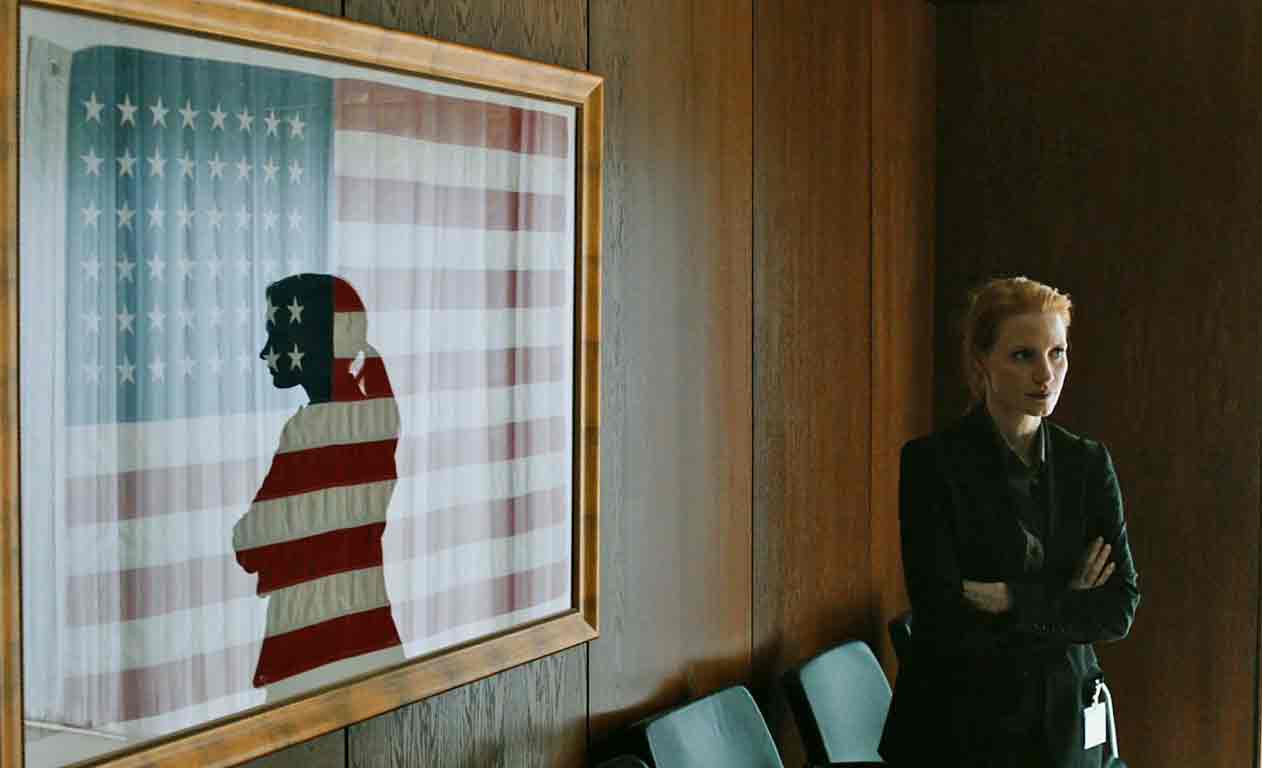Zero Dark Thirty
It’s hard to imagine the director responsible for the vampire western Near Dark (1987) or surfer/cop actioner Point Break (1992) helming the first film to depict the manhunt for Osama Bin Laden, but in recent years Kathryn Bigelow’s career has undergone some serious changes. No longer operating on Hollywood’s commercial fringes, Bigelow now reigns as the doyenne of female directors, wielding some serious box-office clout. Her last film, The Hurt Locker (2008), swept The Academy Awards, taking the Oscars for Best Picture and Best Director, and her latest outing Zero Dark Thirty looks poised to do the same…
Or, at least, looked poised to do the same.
Along with critical adulation there has also been a vehement backlash against the film, focusing on Zero Dark Thirty’s depiction of torture. Bigelow and screenwriter Mark Boal (The Hurt Locker, In the Valley of Elah (2007)) have been accused of ‘distort[ing] history’ and pervading a ‘grotesque lie’, due to the implication that Guantanamo Bay style torture yielded information valuable in finding Bin Laden, when according to official US government sources this was not the case. Political commentator Glenn Greenwald writing for The Guardian states that ZDT:
‘glorifies torture […] because it powerfully depicts it as a vital step – the first, indispensable step – in what enabled the US to hunt down and pump bullets into America’s most hated public enemy.’
{{ quote Ethical issues aside, as a fiction, the film is a masterpiece. Where Bigelow once served up romanticism and hyperstylisation, she now delivers an elegant realist aesthetic and perfect pacing.}}
Greenwald may in part be right, but to suggest that Bigelow and Boal have ‘glorified’ waterboarding and “enhanced interrogation” techniques is a simplification; too black and white. The portrayal of torture, which dominates the opening segment of the film, is disturbing and distressing. We feel little empathy with the agents and plenty of sympathy for the prisoner, Ammar (Reda Kateb), with the process of torture shown to be barbaric and inefficient. Having been stripped and humiliated, hung from the ceiling and repeatedly suffocated, it is only when Ammar is treated as a human being (an age-old interrogation tactic) that he yields viable intelligence. Though it is told from the perspective of the CIA, ZDT operates in a moral grey zone asking its audience whether torture can ever be justified, regardless of result, and to unquestioningly accept any part of the film as right or wrong would be doing the filmmakers a disservice.
Ethical issues aside, as a fiction, the film is a masterpiece. Where Bigelow once served up romanticism and hyperstylisation, she now delivers an elegant realist aesthetic and perfect pacing. Following CIA analyst Maya (played by Jessica Chastain) over ten years, as she heads the hunt for Osama Bin Laden, ZDT, in classic Bigelow style, is a genre-subversion; a play on a police-procedural drama crossed with a warzone thriller. Furthermore, it is a film that refuses to bow to subjectivity, retaining a detachment that matches its historical tone.
This is particularly apparent through the ambivalent treatment of the film’s protagonist. Greenwald describes Maya as a ‘pure saintly heroine’, but Bigelow does little to align the audience with her; if anything, Maya’s “purity” (perhaps an unsuitable word for an overseer of torture) makes her seem all the more alien. Instead, we regard her with a kind of fascination; we marvel at Maya’s fanaticism, her ruthlessness, her relentless pursuit of a single hypothesis. If we want to her succeed, it is only so we can watch the next event unfold and this powerful narrative drive is testament to Bigelow’s ability as storyteller.
However, Zero Dark Thirty isn’t all extended depictions of torture, gathering intelligence and following leads; the combat sequences are visceral, engaging and eerily realistic, with the final raid on the now infamous complex in Pakistan standing as a tour de force in action filmmaking.
Lasting for half an hour, the sequence is already heavy with tension as the Navy SEAL team fly into Pakistan, shrouded in darkness. Once inside the compound, Bigelow manages to capture both the temporary chaos of combat and the nuances of disciplined military protocol, with cinematographer Greig Fraser making excellent use of night-vision camera, placing the audience amongst the soldiers. It is a near perfect execution and it is unlikely a more accurate rendering could have been brought to the screen.
Despite the criticism leveled at Zero Dark Thirty, it remains the film to see this awards season. As a work of metafiction, it may not offer complete authenticity, but that’s not the idea. To quote Picasso “art is a lie that makes us realize truth” and what Bigelow and Boal have attempted is to capture the essence of “the greatest manhunt in history”: its development into a national obsession, the lengths to which those involved went and, ultimately, its relative value.

Comments